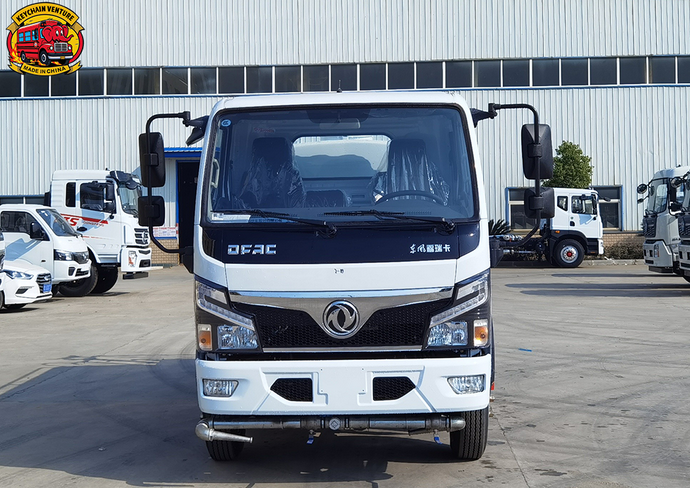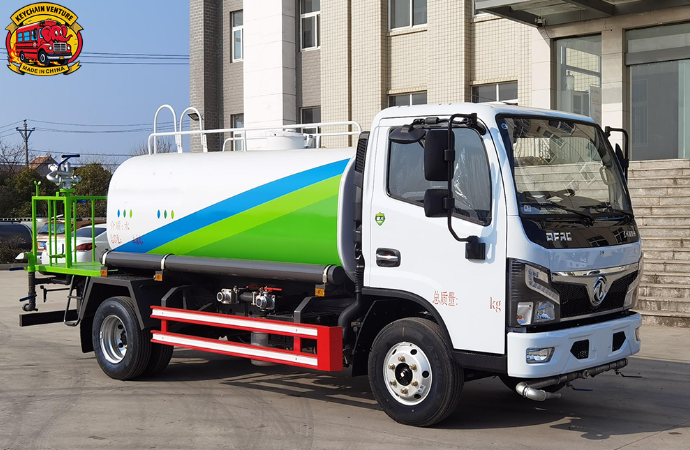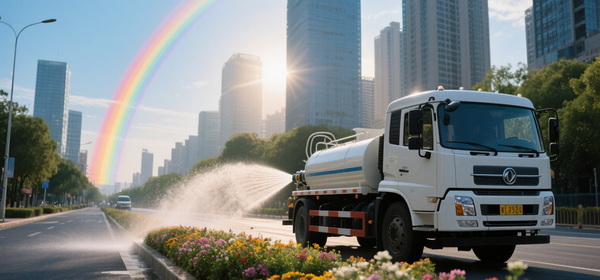Views: 222 Author: Amanda Publish Time: 2025-11-07 Origin: Site








Content Menu
● What is a Water Truck and Why the Tanker Endorsement Matters
● Regulatory Foundations and Scope
>> Key distinctions you should know:
● Getting Ready: Who Needs an Endorsement and How It Is Used
● Practical Guidance for Water Truck Operations
● Truck and Tank Design Considerations
● Safety Protocols and Personal Protective Equipment
● Regulatory and Environmental Compliance
● International and Cross-Border Considerations
● FAQ
>> 1) What is a tanker endorsement for Water Truck?
>> 2) Do Water Trucks require a tanker endorsement when carrying potable water?
>> 3) Can I operate a Water Truck without a tanker endorsement if tanks are small?
>> 4) How does one obtain a tanker endorsement for Water Trucks?
>> 5) What are key safety practices for Water Truck operations?
Water trucks are indispensable across construction, mining, agricultural, municipal, and disaster-relief contexts. They enable dust control, soil stabilization, irrigation, firefighting support, and potable water delivery in remote or challenging environments. Because these vehicles carry large volumes of liquid, regulators impose rigorous requirements to ensure safe handling, highway safety, and environmental protection. A central aspect of these requirements is whether a tanker endorsement is needed for drivers operating water trucks. This article explains what constitutes a tanker endorsement, when it applies to Water Truck operations, how to obtain it, and best practices for safety and compliance. It also covers international considerations, operator qualifications, and practical guidance for fleet managers.

Water trucks are purpose-built or repurposed heavy-duty vehicles equipped with one or more tanks designed to transport sizable quantities of water. Depending on the application, capacities range from around one thousand gallons to several thousand gallons, with pumping and spraying systems integrated for rapid water deployment. Because bulk liquid transport introduces specific risks—liquid surge, weight distribution, slip hazards when spraying, and potential environmental spill scenarios—the licensing framework often requires additional training and certification. The tanker endorsement is designed to certify that a driver has the knowledge and skills to operate a tank vehicle safely, including understanding how to manage liquid surge, perform inspections, respond to leaks, and execute safe loading and unloading procedures. For many regions, the endorsement also signals that the carrier adheres to regulatory standards for bulk liquid transportation. This is particularly relevant for Water Truck operations where compliance affects insurance, liability, and customer confidence.
Regulatory regimes governing tanker endorsements typically derive from national commercial driving standards and local transportation authorities. The core principle is simple: bulk liquid loads in tanks meeting certain capacity thresholds require an extra level of driver qualification. In many jurisdictions, the trigger is twofold:
- Each individual tank capacity surpassing a defined volume (commonly around 119 gallons or similar thresholds).
- The aggregate capacity or total volume transported exceeds a specified limit (often 1,000 gallons or more).
Under these rules, Water Trucks engaged in bulk liquid transport exceeding the thresholds generally require a tanker endorsement (often labeled as “N” on the CDL). If hazardous liquids are involved, a combined endorsement such as “X” (tankers plus HazMat) may apply.
- Not all water-related transport requires a tanker endorsement. If tanks are under the regulatory thresholds, or if the operation involves non-bulk packaged liquids, some jurisdictions may not require the endorsement.
- A tanker endorsement is separate from other endorsements like HazMat. If the transport involves hazardous liquids, drivers may need both endorsements (N for tanker and HazMat, or X for combined tanker/HazMat, depending on the jurisdiction).
- International operations introduce additional layers of compliance, including cross-border regulatory alignment, environmental conventions, and marine-related standards where applicable.
A tanker endorsement is typically added to an existing Commercial Driver's License (CDL) after meeting educational, testing, and sometimes background-check requirements. Common steps include:
- Holding a valid CDL appropriate to the vehicle class used for Water Truck operations.
- Passing a dedicated knowledge test that covers tank vehicle safety, inspection, ergonomic loading/unloading, and emergency procedures.
- Completing any jurisdiction-specific prerequisites, such as background checks for HazMat endorsements if required.
- Maintaining ongoing compliance with safety training, vehicle inspections, and regulatory updates.

Safety and compliance are not merely regulatory formalities; they are integral to operational reliability and public safety. The following sections offer practical guidance for fleet operators, drivers, and maintenance teams.
- Tank integrity: Inspect for corrosion, cracks, weld flaws, and mounting integrity. A compromised tank can lead to leaks or catastrophic failure under load shifts.
- Pump and hose systems: Ensure pumps, discharge hoses, nozzles, and spray bars are robust, leak-free, and properly labeled. Regular functional testing should be part of a weekly inspection.
- Weight distribution: Understand how water load affects axle weights, tire wear, braking distance, and steering response. Off-center loads or uneven filling can increase rollover risk during sharp maneuvers or emergency evasive actions.
- Valves and controls: All access ports and control valves should be clearly labeled and protected against accidental operation.
- Loading and unloading: Implement standardized procedures for safe loading and unloading, including confirming water sources, verifying the destination, and ensuring safe transfer practices to minimize spills.
- Route planning: Plan routes with attention to road weight limits, bridge clearances, and potential restrictions for heavy vehicles. Consider water quality requirements for potable deliveries if applicable.
- Spraying techniques: For dust control or soil stabilization, calibrate spray rates, nozzle configurations, and boom height to optimize effectiveness while minimizing runoff and water waste.
- Weather and terrain awareness: Plan for weather conditions that affect traction, visibility, and spray performance on inclined or uneven terrain.
- PPE: Drivers and ground crew should wear appropriate PPE, including eye protection, gloves, steel-toed footwear, and high-visibility apparel.
- Communication: Use radios or reliable hand signals when coordinating with ground teams or spotters.
- Spill response: Have spill kits, absorbents, and containment materials readily available, with established procedures for reporting and cleaning up spills promptly.
- Water quality and hygiene: For potable Water Truck operations, ensure water sources meet health standards and that dispensing points maintain hygienic practices.
- Spill and runoff management: Use containment measures to prevent runoff into soil or water bodies, particularly in sensitive environments or near waterways.
- Record-keeping: Maintain logs of inspections, maintenance, loading/unloading events, and driver training records as required by regulations and customers.
- CDL and Tanker Endorsement: As discussed, a valid CDL plus a tanker endorsement is typically needed for bulk liquid transport exceeding regulatory thresholds.
- Additional training: Operators benefit from continued education in bulk liquid handling, emergency response, and environmental stewardship.
- On-the-job mentoring: For new drivers, a mentorship program covering load securement, safe driving in variable conditions, and customer-specific requirements can improve safety outcomes.
When Water Truck operations cross borders or operate in port areas, compliance with international conventions becomes important. This may include standards for tanker definition, environmental protection protocols, and cross-border licensing recognition. Ensuring alignment with local laws, international guidelines, and customer requirements helps avoid regulatory penalties and operational delays.
Water Truck operations sit at the intersection of heavy-duty engineering, regulatory compliance, and practical field safety. A tanker endorsement is a crucial credential for drivers handling bulk liquid loads that exceed regulatory thresholds, helping ensure safe loading, transport, and unloading. For fleet managers and operators, investing in proper training, vehicle maintenance, and robust safety procedures translates into improved safety outcomes, higher customer trust, and smoother regulatory compliance. Adherence to best practices and ongoing professional development remains essential for success in this dynamic segment of commercial transportation.

A tanker endorsement authorizes a driver to operate a tank vehicle carrying bulk liquids, including Water Truck operations exceeding defined capacity thresholds.
Yes, if the tank size and total load meet the regulatory thresholds for bulk liquid transport, potable water falls under the same endorsement requirement.
If each tank is below the threshold and the total volume is under the limit, an endorsement may not be required; verify local rules and company policies for confirmation.
Typically by holding a CDL, studying for and passing a tanker-specific knowledge test, and completing any jurisdictional prerequisites and background checks.
Implement thorough pre-trip inspections, manage liquid surge, follow weight and route planning guidelines, wear appropriate PPE, and maintain clear spill response procedures.
[1](https://blog.knichellogistics.com/news/lets-talk-tanker-endorsements)
[2](https://cowtownexpress.com/blog/your-complete-guide-to-tanker-endorsements)
[3](https://dol.wa.gov/driver-licenses-and-permits/commercial-driver-licenses-cdl/endorsements-and-restrictions)
[4](https://schneiderjobs.com/blog/what-is-tanker-endorsement)
[5](https://www.federalregister.gov/documents/2013/09/26/2013-23510/commercial-drivers-license-standards-definition-of-tank-vehicle-used-for-determining-the-license)
[6](https://haletrailer.com/blog/what-is-a-tanker-endorsement/)
[7](https://www.midwesttruckdrivingschool.com/how-to-get-your-tanker-endorsement-in-2025-ultimate-step-by-step-guide/)
[8](https://trinitylogistics.com/blog/new-tanker-endorsement-regulations-are-you-driving-illegally)
[9](https://www.fmcsa.dot.gov/registration/commercial-drivers-license/does-unattached-tote-or-portable-tank-cargo-capacity-1000)